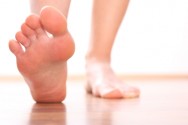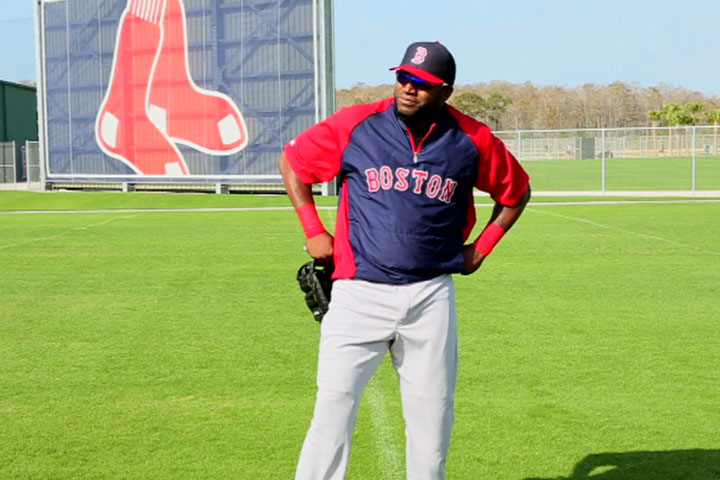Items filtered by date: March 2013
New Study Shows Running Surface May Determine Type of Foot Strike
 A recent study published in Footwear Science shows that the surface underfoot plays a major role in foot-strike determination. Results showed that only 20% of subjects landed on their midfoot or forefoot, on a soft surface. While on a hard surface the percent increased to 65%.
A recent study published in Footwear Science shows that the surface underfoot plays a major role in foot-strike determination. Results showed that only 20% of subjects landed on their midfoot or forefoot, on a soft surface. While on a hard surface the percent increased to 65%.
According to UMass running biomechanics group, a study they conducted also showed most test subjects switched to a mid- or forefoot strike on the hard surface when running on hard surface versus soft EVA foam like material. Researchers believe runners tend to be forefoot strikers due a mechanism to “reduce pain.”
The biomechanics of the foot, ankle, and lower leg are essential to understanding the proper functioning of the lower leg and foot. If you suspect a problem with your biomechanics and believe it is causing foot pain, ankle pain, or walking instability, it is recommended to see a podiatrist, like Howard Hyman of The Podiatry Center, P.C for immediate consultation, care, and treatment options.
Biomechanics in Podiatry
Podiatric biomechanics is a particular sector of specialty podiatry with licensed practitioners who are trained to diagnose and treat conditions affecting the foot, ankle and lower leg. Biomechanics deals with the forces that act against the body causing an interference with the biological structure and focuses on the movement of the ankle, the foot and the forces that interact with them.
A History of Biomechanics
- Biomechanics dates back to the BC era in Egypt where evidence of professional foot care has been recorded.
- In 1974 biomechanics gained a higher profile from the studies of Merton Root, who claimed that by changing or controlling the forces between the ankle and the foot, corrections or conditions could be implemented to gain strength and coordination to the area.
Modern technology improvements are based on past theories and therapeutic processes providing a better understanding of podiatry concepts for biomechanics. Computers provide accurate determinations about the forces, moments and patterns of the foot and lower legs with the most important information captured.
To learn more about biomechanics in podiatry please follow link below.
If you have any questions, please feel free to contact our office in Milburn NJ. We offer the newest diagnostic and treatment technologies for all your foot ankle injuries.
Read more on Biomechanics in Podiatry.
Toenail Fungus Can Be Prevented Easily
 Although there is no denying that feet are an important part of the body, they are a part that is often neglected. Toenail fungus is one problem that can occur if the feet are overlooked, a problem that can be both uncomfortable and embarrassing. Luckily, there are steps that can be taken to prevent getting a fungal infection. Too much moisture can contribute to getting such an infection and an easy way to combat this problem is to change your socks, select natural fibers for socks and shoes, and to let shoes dry out enough in between wears.
Although there is no denying that feet are an important part of the body, they are a part that is often neglected. Toenail fungus is one problem that can occur if the feet are overlooked, a problem that can be both uncomfortable and embarrassing. Luckily, there are steps that can be taken to prevent getting a fungal infection. Too much moisture can contribute to getting such an infection and an easy way to combat this problem is to change your socks, select natural fibers for socks and shoes, and to let shoes dry out enough in between wears.
There may be steps to avoid getting fungal toenails, but no step guarantees that this condition will never be a problem. If you are suffering from fungal toenails you should seek the care of a podiatrist such as Howard Hyman of The Podiatry Center, P.C. Dr. Hyman can examine your feet and work with you to provide the appropriate treatment options to ensure safe foot recovery.
Toenail Fungus Treatment
Toenail fungus is a problem which affects many people and is hard to get rid of. Fortunately, there are several methods to go about treating toenail fungus.
Antibiotics & Treatments
Lamisil – is the most common treatment. It is available as an antibiotic Terbinafine tablet and cream. Terbinafine is a chemical component which kills fungal growth. Applying regular doses will gradually kill the fungus.
Talcum powder – applying powder on the feet and shoes helps keep moisture away.
Sandals or open toed shoes – wearing these will allow air movement and help keep feet dry.
Alternative Treatments
To learn more follow the link below.
If you have any questions, please feel free to contact our office in Milburn NJ. We offer the newest diagnostic and treatment technologies for all your foot ankle injuries.
Read the Full Article on Toenail Fungus.
Red Sox Star is Optimistic About His Achilles Injury
 David Ortiz (Big Papi) is optimistic with his future as a Red Sox, after sharing some news during spring training. “I think it’s going to happen,” said Ortiz when asked if he’d be in the starting lineup on April 1. Ortiz disappeared from the lineup during the last half of the season with an Achilles injury, which was more serious than anyone imagined. Ortiz was only available to play one game after the injury occurred. Unfortunately, Big Papi only made his injury worse. “I was worried about my Achilles snapping, “said Ortiz. Ortiz feels pretty good and secure getting back to the action after undergoing PRP injections, shockwave therapy and other treatments during the rehab process.
David Ortiz (Big Papi) is optimistic with his future as a Red Sox, after sharing some news during spring training. “I think it’s going to happen,” said Ortiz when asked if he’d be in the starting lineup on April 1. Ortiz disappeared from the lineup during the last half of the season with an Achilles injury, which was more serious than anyone imagined. Ortiz was only available to play one game after the injury occurred. Unfortunately, Big Papi only made his injury worse. “I was worried about my Achilles snapping, “said Ortiz. Ortiz feels pretty good and secure getting back to the action after undergoing PRP injections, shockwave therapy and other treatments during the rehab process.
Dealing with an Achilles tendon injury like Ortiz can be a painful ordeal. Luckily, an injury like this can be managed and taken care of by a podiatrist like Howard Hyman of The Podiatry Center, P.C. Dr. Hyman can examine your Achilles tendon, determine the severity of your injury, and work with you to provide the appropriate treatment options.
What Are the Most Common Injuries to the Achilles Tendon?
Tendon Ruptures: One may hear a popping or snapping sound if their Achilles tendon ruptures. Symptoms are swelling, pain, and difficulty walking or bending the foot forward. There are surgical and non-surgical procedures available, and depending on the treatment you take, recovery can last up to a year from treatment.
Achilles tendinitis: Achilles tendinitis is the milder of the two injuries, and can be recognized by the following symptoms: inflammation, dull to severe pain, an increased flow of blood to the tendon, portions of the tendon growing in thickness, and a slower movement time. Tendinitis can be treated in many different ways and is often diagnosed by an MRI.
How Can I Avoid Injuries?
- Stretch before exercising, running or walking
- Calf raises, squats, leg curls, leg extensions, leg raises, lunges, and using the leg press
- Work out on a floor that is cushioned to relieve pressure on your heels.
- Find properly fitting and comfortable shoes
If you have any questions, please feel free to contact our office in Milburn NJ. We offer the newest diagnostic and treatment technologies for all your foot ankle injuries.
Read our Article to learn more about Achilles tendon injuries.
